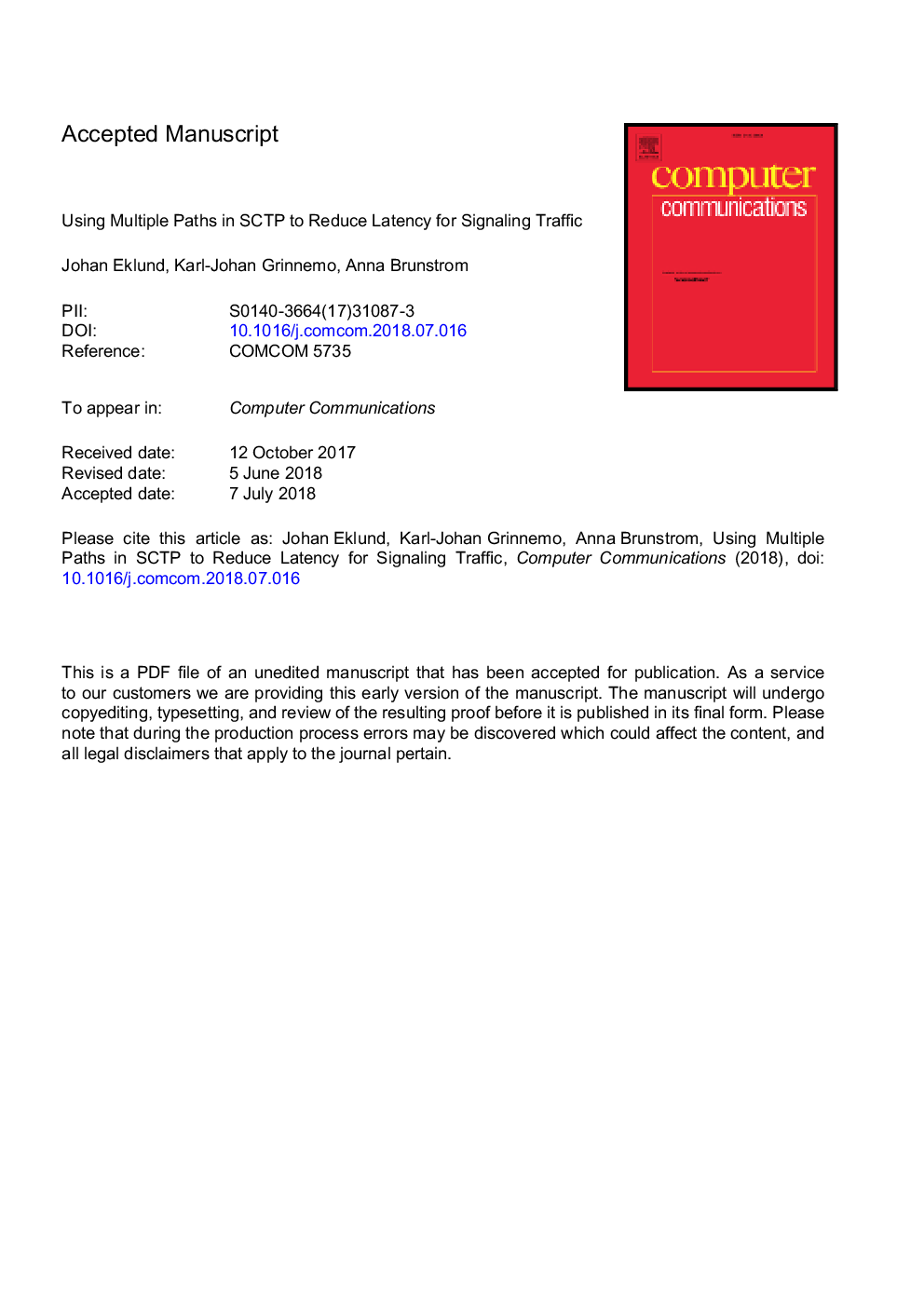| Article ID | Journal | Published Year | Pages | File Type |
|---|---|---|---|---|
| 11002527 | Computer Communications | 2018 | 19 Pages |
Abstract
The increase in traffic volumes as well as the heterogeneity in network infrastructure in the upcoming 5G cellular networks will lead to a dramatic increase in volumes of control traffic, i.e., signaling traffic, in the networks. Moreover, the increasing number of low-power devices with an on-off behavior to save energy will generate extra control traffic. These increased traffic volumes for signaling traffic, often generated as bursts of messages, will challenge the signaling application timing requirements on transmission. One of the major transport protocols deployed for signaling traffic in cellular networks is the Stream Control Transmission Protocol (SCTP), with support for multiple paths as well as for independent data flows. This paper evaluates transmission over several paths in SCTP to keep the latency low despite increasing traffic volumes. We explore different transmission strategies and find that concurrent multipath transfer over several paths will significantly reduce latency for transmission over network paths with the same or similar delay. Still, over heterogeneous paths, careful, continuous sender scheduling is crucial to keep latency low. To this end, we design and evaluate a sender scheduler that considers path characteristics as well as queuing status and data flows of different priority to make scheduling decisions. Our results indicate that by careful dynamic sender scheduling, concurrent multipath transfer could lead to reduced latency for signaling traffic irrespective of path or traffic characteristics.
Keywords
Related Topics
Physical Sciences and Engineering
Computer Science
Computer Networks and Communications
Authors
Johan Eklund, Karl-Johan Grinnemo, Anna Brunstrom,
